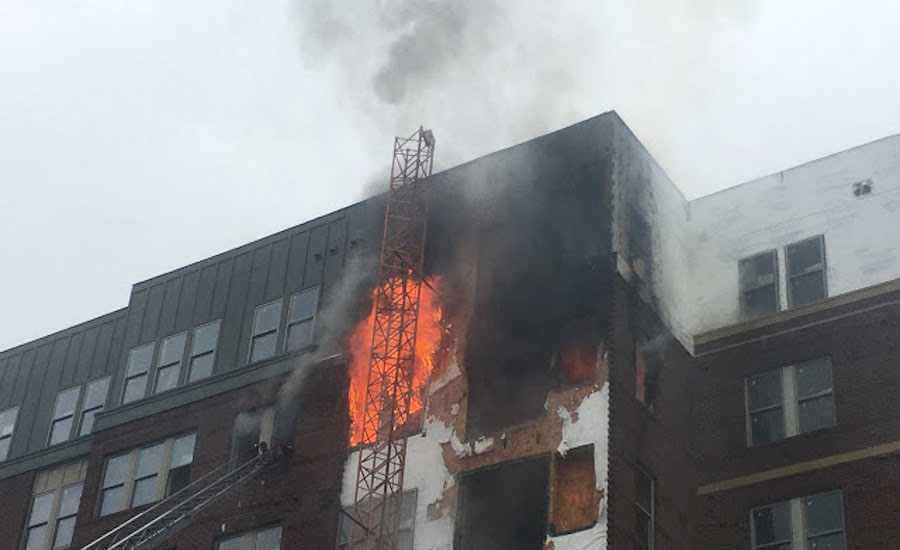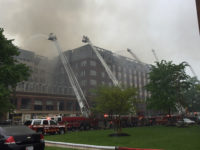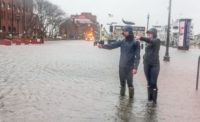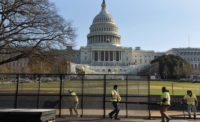A five-alarm fire at a wood-framed apartment building under construction in College Park, Md., has renewed calls to regulate “light-framed, combustible, podium construction,” known as Type V construction, in low- to midrise buildings.
Causing some $39 million in damages, the April 24 fire at the seven-story Fuse 47 project was the largest “suppression effort and the highest fire-loss estimate” in the history of Prince George County, according to fire department officials. The blaze forced nearby University of Maryland to cancel classes for the day and caused residents at a senior-citizen housing facility to temporarily relocate. No serious injuries were reported, and fire investigators’ “preliminarily findings” indicate the cause was accidental.
The fire occurred about a month after a hearing on legislation to include new fire-safety features for Type V construction in the state’s building code. The bill calls for Type V buildings taller than three stories to include non-combustible fire barriers with a two-hour fire rating. The bill limits certain wood structures to 50 ft tall and 12,000 sq ft per floor. Construction involving multifamily structures would have to be monitored 24 hours a day by an approved fire-watch warden.
Kevin Lawlor—a spokesman for Build With Strength, a coalition of the National Ready Mixed Concrete Association—said the legislation would have prevented the fire at Fuse 47. “This is more proof for lawmakers to consider that prioritizing negligible cost savings over the safety and durability of construction materials is a public-safety nightmare,” Lawlor said.
Lawlor said similar measures have been adopted in New York City, Chicago and Sandy Springs and Tucker, Ga.
In Maryland, however, the legislation—along with a concurrent bill filed in the state Senate—failed to move out of committee for the past two years. State Delegate Cory McCray (D-Baltimore), who introduced the house bill, said he will take the “pulse” of his colleagues before deciding to reintroduce it in the new legislative session, which begins in January. He said local builders with “strong support in the Legislature” are considering costs over public safety.
Conversely, Robert Glowinski, president and CEO of the American Wood Council, said the Maryland bills, along with “anti-wood” legislation in other states, is the concrete industry’s effort to “capture market share.” He says the lobby is circumventing the construction “experts” that are involved in the national process for setting building codes. The AWC argues that fire statistics are similar for occupied buildings composed of wood, steel and concrete. “From a life-safety standpoint, the codes are doing what they are intended to do,” said Kenneth Bland, vice president of codes and regulations for AWC.
Lawlor maintained that building codes are a “minimum requirement and are simply not adequate in providing residents the safety needed in the event of a catastrophe.”






